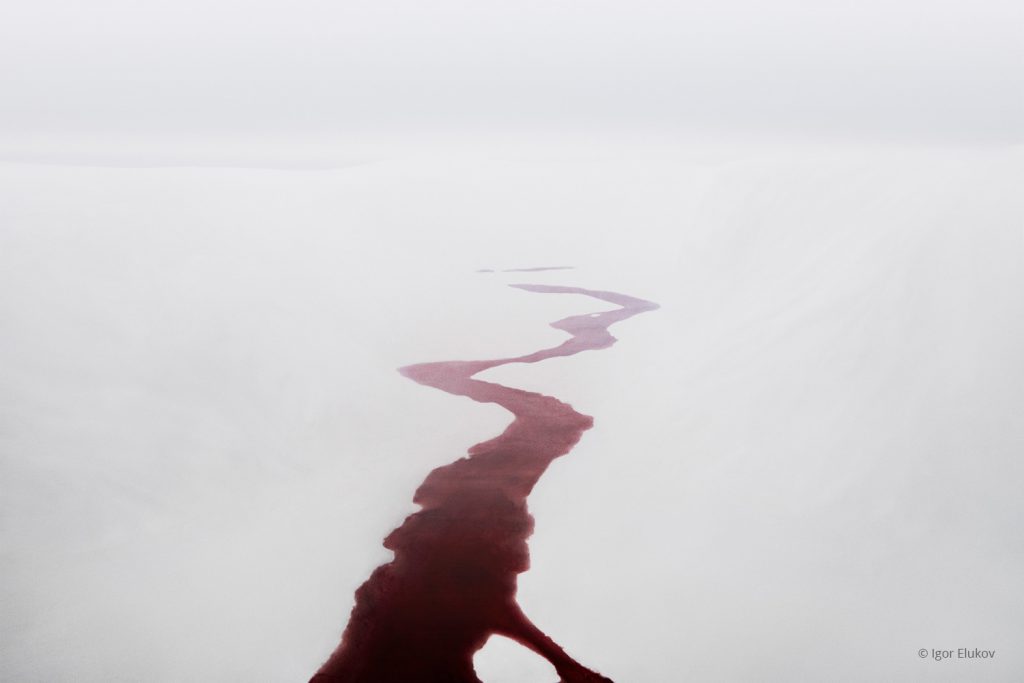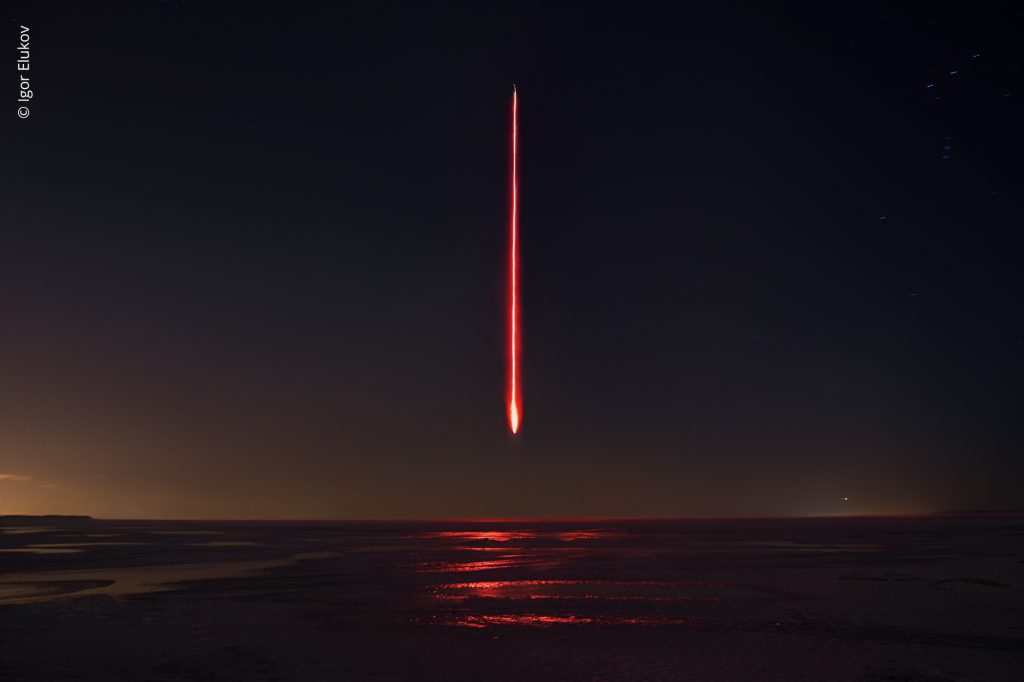
Beyond photographic limits - L. Fritz magazine

Helena Weber on the climate change project “Everything is Connected”
Polar bears on melting ice floes, elephants by dried-out watering holes. These are typical symbolic images on climate change, which we are all familiar with and may already be tired of seeing. Eternally recurring motifs have been operated by medially established visual language on the topic of environment and climate for years. This conclusion was already arrived at, a few years ago, by the think tank Climate Outreach, which demanded new photographic perspectives on the climatic changes that our planet is undergoing.
The “Everything is Connected” project seeks to identify and promote exactly those perspectives. In 2020, for the third time, the “Sideluck Editorial” issued a global biennal call for photographic works that have climate change as their theme, with the aim of stimulating a reflection on the inseparable link between human actions and climate crisis. And hence thinking photographically about the effects of one’s own lifestyle on the environment. The ten selected works by international photographers take up important aspects around the comprehensive topic of climate change: air pollution, land exploitation, weather disasters, destruction of habitat for human and animal, the resulting migration and the relationship between humans and nature.

The ten selected works by international photographers take up important aspects around the comprehensive topic of climate change: air pollution, land exploitation, weather disasters, destruction of habitat for human and animal, the resulting migration and the relationship between humans and nature. The projects’ different gazes are as diverse as the topics themselves. They range from traditionally documentary to rather interpretative or personal approaches and aesthetics. And although they are all closely linked to the depicted place or topic, they also convey a universal message, which reveals how much human welfare depends on a healthy environment and, conversely, the latter depends on the former – regardless of whether the photographs were taken in the Amazon or the north of Russia.
The task is no easy one, in many respects. Unlike the climate catastrophe, which generates strong images now and then, the climate crisis, unfolding slowly, can be only partially observed directly. The photograph, which captures the momentary, very soon reaches its limits and throws up the question of whether the individual image is comprehensive enough to portray the complexity of climate change.
“The more pictures photographers make of land destruction, violence or poverty, the more accustomed we become to seeing them”, says Maria Teresa Salvati, founder and chief editor of the “Sideluck Editorial”. And there is another dilemma added to this: “If [photography] is trying to communicate an uncomfortable truth about environmental degradation and the image is beautiful, the question arises as to whether the message is compromised by the form, and so if the image is consumed aesthetically rather than politically.”

Thus, on the one hand, and especially in the face of overwhelming floods of images, it is a matter of identifying alternative, new paths of perception. And on the other hand, not to reduce photographs to Kant’s notion of the sublime, according to which contemplation of an object becomes all the more attractive the more fear-inspiring the object is, provided that the contemplator finds himself in safety.
“Everything is Connected” intends to look into the question of whether the photographic aesthetic is able to occupy a catalytic significance, in order to steer attention onto the topic concerned instead of distracting.
And thereby to reflect on what photography’s role consists of in today’s storytelling of the crisis and how it can help to convert contemplation into sustainable actions and thereby support social change. For, in Salvati’s eyes, photography’s potential is still far from being exhausted.
The multidisciplinary project accordingly understands itself to be an experiment around participative narrating, as it brings together various media and disciplines and thereby forges unusual alliances, with the aim of reaching new and wider public arenas and expanding photography’s radius of action. Thus, politics and art, urban planning and sciences encounter one another, in order to seek new paths, communicate climate change, while involving all generations, including the youngest.
To that end, in partnership with the curators’ collective Kublaiklan, the “Through the Eyes of Children” project was set up, which works with the idea of children’s unfiltered gaze, which often lays bare images’ ambiguity particularly trenchantly. Simultaneously, the project gets children and young people involved in the discourse about visual education and equally about the climatic changes faced by the world they will inhabit in the future.
This is a topic that is also close to Photoszene’s heart and will be taken up in the “NEXT! Festival der Jungen Photoszene”. The children’s picture descriptions, collected by the Kublaiklan collective, will be installed on billboards in Cologne’s public space, while workshops will likewise offer the youngest the opportunity to communicate their version of what the images are trying to tell us.
April 14, 2021

L. Fritz Magazine
L. Fritz is the free bilingual magazine of the Photoszene. In homage to the great promoter of photography L.Fritz Gruber, it is echo sounder and ambassador, serious and exciting, entertaining and challenging.
L. Fritz reflects current trends and exhibition practices of photography in an international and artistic context. The Photography Location Cologne with its diverse, renowned institutes is regularly the starting point for observation and an occasion for critical discussion and reflection on the leading medium of our time. The magazine addresses curators, gallery owners and publishers, students and collectors, photographers and designers, professionals and amateurs alike. In addition to the traditional free distribution in nine European countries for the first time a portion of the print run is now also being sold additionally via railway station and airport bookstores.
Through the eyes of children
Education – Public Space – Social Innovation – Visual Art
Planetary Health and Visual Culture - David Cross
Education – Science – Visual Art
Secret Sarayaku - Misha Vallejo
Education – Social Innovation – Visual Art
Photography and the climate emergency - Symposium III
Education – Science – Visual Art
Empathy and Connection in Environmental Storytelling
Education – Science – Visual Art
Contemporary Photography and Public Engagement
Education – Public Space – Science – Social Innovation -Visual Art
Environmental protection versus progress: who wins? - Ours To Save
Mass Media
Alternative Aesthetics in Environmental Storytelling
Education – Science – Visual Art
How to make the invisible, visible? AIR by Marina Vitaglione
Science – Visual Art
Towards Trans-disciplinarity
Education – Public Space – Science – Visual Art
How photography can address climate crisis as a social justice issue
Education – Mass Media – Visual Art
Visualizing the Climate Crisis:
Ocean Acidification
Science – Visual Art
Visualizing the Climate Crisis:
Virtual Water
Education – Science – Visual Art
Visualizing the Climate Crisis:
the Fashion System
Education – Mass Media – Visual Art
